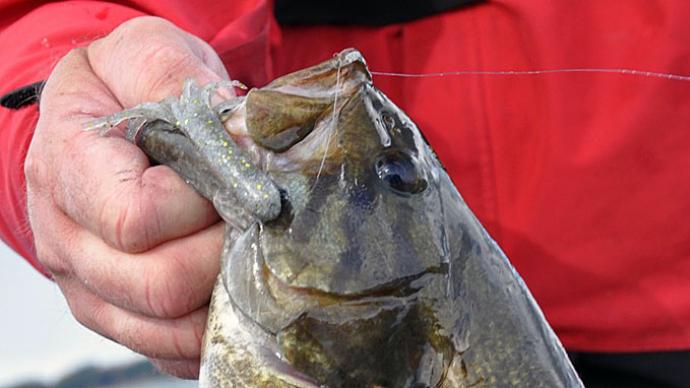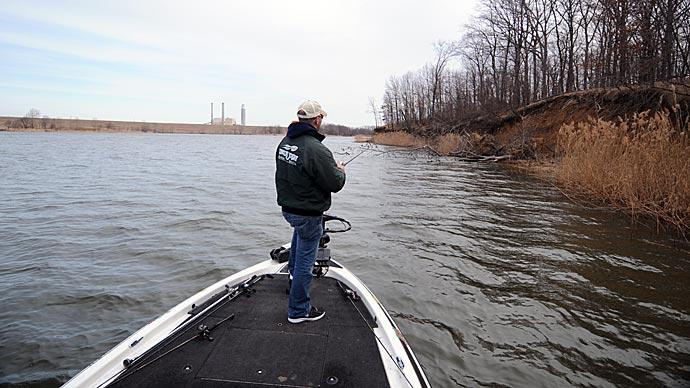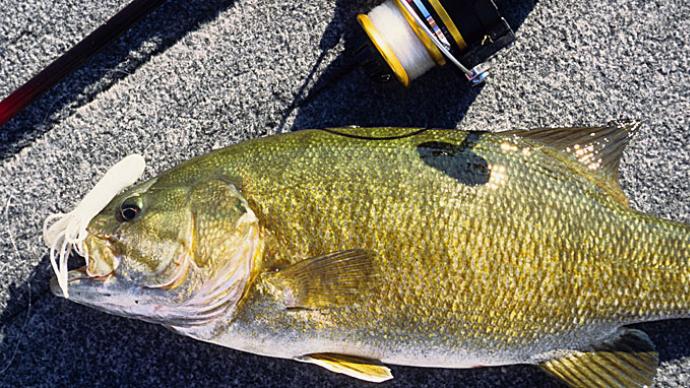
Soft plastic lures have been truly revolutionized only twice since they were introduced in the 1950s. First, the Slug-Go soft plastic jerkbait changed how we view and use soft plastics. Variations of that bait continue to be designed and produced by many manufacturers as anglers rely heavily upon its fish-catching ability.
Perhaps just as trend-setting and every bit as duplicated and modified, the original Gitzit tube lure has generated a tremendous amount of fanfare since its introduction in the mid- 1980s. If imitation is the greatest form of flattery, then Bobby Garland, inventor of the Gitzit, has been greatly honored.
Virtually every soft plastic manufacturer offers a tube lure design. Some have combined a crawfish or salamander shape with the hollow body design of a tube to create a unique product. Other companies have produced jig heads, hooks, rattles, and trailers designed specifically for use with tubes.
Indeed one of the most versatile of all soft plastic designs, tubes continue to catch bass from the surface to the bottom in shallow and deep water year round. An individual angler's amount of creativity is the only limitation when it comes to rigging and fishing tubes. They are commonly Texas-rigged, Carolina-rigged, drop-shot rigged, and even fished weightless.
The most basic rigging method involves inserting a jig head into the hollow body of a tube. This method is commonly used when fishing the smaller, 3-inch tubes on spinning tackle. With the jig head tucked inside the tube, this rig works great as a clear-water finesse lure. It also skips exceptionally well, making it a good choice for fishing boat docks and shorelines with overhanging vegetation. The action of a tube can be significantly affected by the position of the jig head inside the body. With the jig head pushed forward, tubes tend to fall faster with less spiral. To slow the fall and increase the amount of spiral, position the jig head back from the "nose" of the tube.
While tubes appeal greatly to largemouth bass, they may be even more preferred by smallmouth and spotted bass. Virtually all smallmouth enthusiasts consider tubes a primary lure in their tackle box.
For added attraction, anglers insert a variety of items into the body of a tube. For example, Alka Seltzer tablets are broken into pieces and inserted to create bubbles and a fizzing effect when exposed to water. It's also popular to soak a cotton ball in fish attractant to let the attractant ooze out of the tube's body. In addition, Styrofoam can be added to make a tube float high when Carolina rigged or fished on the surface. And, of course, rattles are commonly inserted, especially when fishing stained water or heavy cover.
A casting spoon can be significantly enhanced by inserting it into the body of a tube, then adding a swivel by running the snap through the tube walls and the line tie at the top of the spoon. This increases the action, adds buoyancy, and creates a soft textured lure that can be cast a great distance. The same can be done to improve the performance of a jigging spoon.
Bass anglers have, at times, been known to remove the silicone or rubber skirt from a spinnerbait and replace it with a tube.
Tubes can also be rigged weightless and worked across the top of weed beds or fished just below the surface in the same manner as a soft jerkbait.
The latest craze in tubes involves pitching and flipping the larger 4- and 5-inch versions in heavy cover. In addition, several manufacturers offer large flippin' tubes with a solid plastic head to accommodate Texas and Carolina rigging or for threading onto a jig head.
While very effective at attracting strikes, many anglers complain about missing bites and losing fish on Texas-rigged tubes. A large amount of plastic tends to "ball up" in the bend of the hook, preventing the hook point from fully penetrating the plastic. To address this problem, Oldham Lures recently designed a heavy-duty tube lure jig head that features a fiber weed guard and a Gamakatsu flippin' hook. When rigged, the jig head is concealed inside the body of the tube. The quality hook enables anglers to use heavy lines with their jig rod when flipping tubes to heavy cover. Oldham's new flippin' jig head is fitted with the screw-lock attachment and is perfect for flipping tubes and other types of soft plastics in the grass.
The fiber weed guard on these jig heads can be customized for every situation. When flipping heavy cover such as brush or standing timber, the fibers of the weed guard can be spread out in a fan or V-shape. A good bit of the weed guard can be removed when fishing weed beds or sparse cover.
Tubes have an application to fit almost any fishing situation. With virtually unlimited rigging and presentation options, they deserve a top-shelf location in every bass angler's tackle box.




